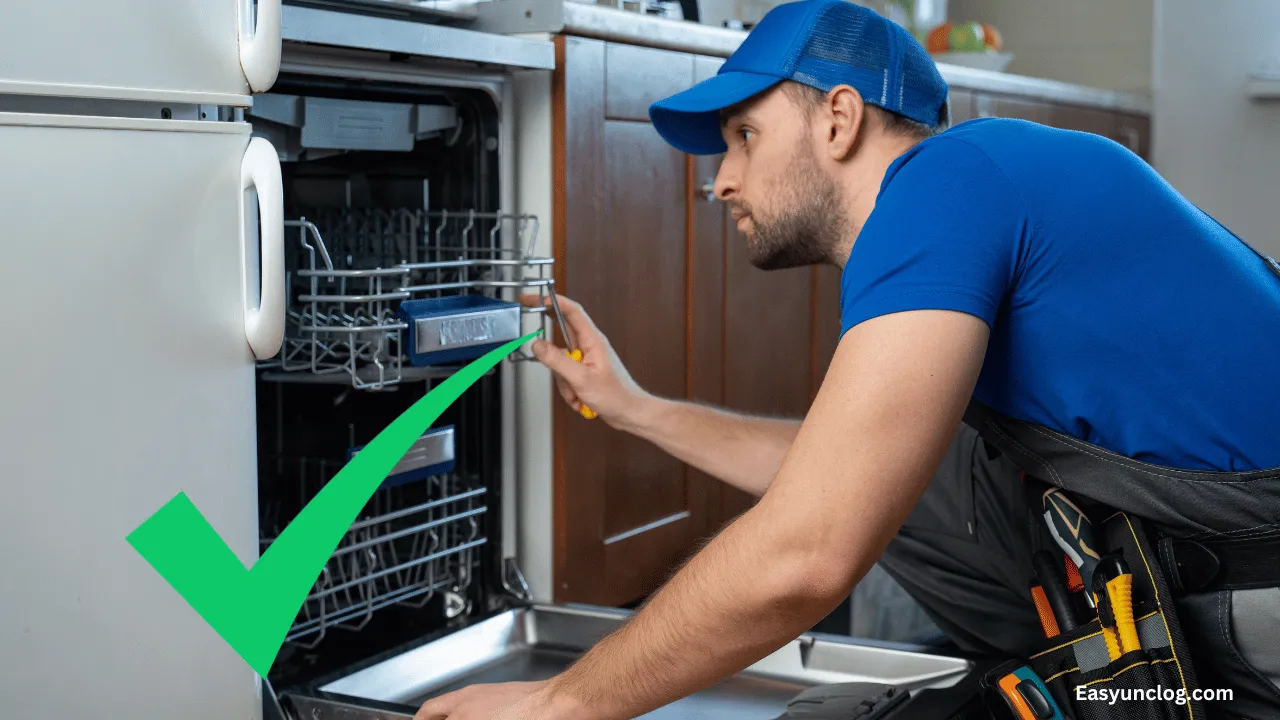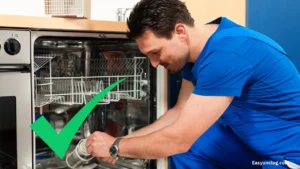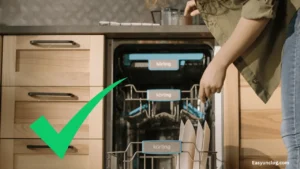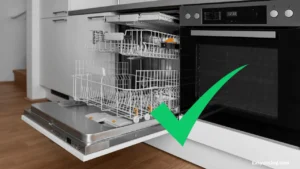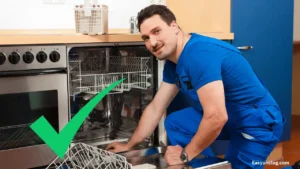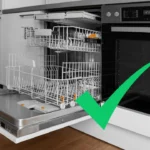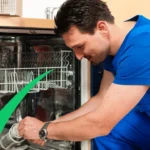Dishwashers have become essential in modern kitchens, saving time and ensuring our dishes are sparkling clean. However, like any frequently used appliance, dishwashers can run into issues, a common problem being clogged pumps.
A clogged dishwasher pump can lead to ineffective cleaning, water not draining correctly, and even potential damage to the appliance. This guide provides a detailed, step-by-step approach to unclogging your dishwasher pump and ensuring it operates smoothly and efficiently.
Contents
- 1 Understanding Your Dishwasher’s Pump System
- 2 Safety First: Preparing to Unclog Your Dishwasher
- 3 Step-by-Step Guide to Unclogging Your Dishwasher Pump
- 4 Preventing Future Clogs
- 5 Conclusion
- 6 FAQs
- 6.1 1. How do I know if my dishwasher pump is clogged?
- 6.2 2. Can I unclog the dishwasher pump myself?
- 6.3 3. What safety precautions should I take before unclogging the dishwasher pump?
- 6.4 4. What tools will I need to unclog my dishwasher pump?
- 6.5 5. How do I access the dishwasher pump?
- 6.6 6. What should I do if I find debris in the pump?
Understanding Your Dishwasher’s Pump System
Before diving into the unclogging process, it’s crucial to understand the components of your dishwasher’s pump system. The pump system consists of two main parts: the circulation pump and the drain pump.
The circulation pump forces water through the spray arms during a wash cycle, whereas the drain pump removes the dirty water from the dishwasher at the end of the cycle. Clogs can occur in either of these areas due to food particles, grease, or debris buildup.
Signs of a Clogged Dishwasher Pump
Identifying a clogged dishwasher pump early can prevent further complications. Common signs include:
- Water not draining properly
- Dishes remain dirty after a cycle
- Unusual noises during the drain cycle
- Water pooling at the bottom of the dishwasher
Safety First: Preparing to Unclog Your Dishwasher
Safety should be your top priority before attempting to unclog the dishwasher pump.
Disconnect Power
Always start by disconnecting the dishwasher’s power supply. You can do this by unplugging it from the power outlet or turning off the circuit breaker.
Gather Your Tools
Having the right tools at hand can make the unclogging process smoother. You will need:
- A pair of pliers
- A screwdriver
- A flashlight
- A sponge or cloth
- A bucket or shallow pan
- Protective gloves
Step-by-Step Guide to Unclogging Your Dishwasher Pump
With safety measures in place and your tools ready, you can begin the unclogging process.
Accessing the Dishwasher Pump
- Remove the Bottom Rack: Remove your dishwasher’s bottom rack to access the floor.
- Locate the Pump: Use your flashlight to locate the pump. It is usually found beneath the spray arms at the bottom of the dishwasher.
- Remove the Cover: Depending on your dishwasher model, you may need to unscrew the cover to access the pump. Use your screwdriver for this step.
Inspecting and Cleaning the Pump
- Inspect for Clogs: With the cover removed, inspect the pump and surrounding area for visible signs of clogging. Look for food particles, glass shards, or other debris.
- Remove Debris: Use pliers to remove any large objects carefully. For smaller particles, a sponge or cloth may be more effective.
- Check the Impeller: The impeller is a small, usually plastic, blade that can also become clogged. Ensure it is clean and moves freely.
Reassembling and Testing Your Dishwasher
- Reassemble the Pump Cover: Once you’ve cleaned the pump and surrounding area, reattach the pump cover using your screwdriver.
- Replace the Bottom Rack: Slide the bottom rack back into the dishwasher.
- Reconnect Power and Run a Test Cycle: After ensuring everything is back in place, reconnect the power to your dishwasher and run a short cycle to test if the unclogging was successful.
Preventing Future Clogs
To avoid future clogs in your dishwasher pump, consider the following tips:
Rinse Dishes Before Loading
While modern dishwashers can handle most food residues, rinsing dishes can prevent larger particles from clogging the system.
Regular Maintenance
Perform regular checks and cleanings of your dishwasher’s filter and pump area to prevent debris buildup.
Use the Right Detergent
Ensure you’re using a dishwasher detergent that is suitable for your model. Some detergents are better at breaking down food particles and preventing clogs.
Conclusion
A clogged dishwasher pump can be a nuisance, but with the right approach, it’s often resolved by yourself. By following the steps outlined in this guide, you can ensure your dishwasher continues running efficiently and keeping your dishes clean.
Remember, preventive maintenance is key to avoiding future clogs, so clean your dishwasher regularly and be mindful of what you put in it.
With some effort, your dishwasher can provide years of trouble-free service, making daily chores much more accessible.
FAQs
1. How do I know if my dishwasher pump is clogged?
Signs that your dishwasher pump might be clogged include water not draining correctly, dishes remaining dirty after a cycle, unusual noises during the drain cycle, and water pooling at the bottom of the dishwasher after the cycle has ended.
2. Can I unclog the dishwasher pump myself?
Yes, in many cases, you can unclog the dishwasher pump yourself by following detailed instructions. You’ll need essential tools like pliers, a screwdriver, a flashlight, and safety precautions such as disconnecting the power supply.
3. What safety precautions should I take before unclogging the dishwasher pump?
Before attempting to unclog the dishwasher pump, ensure you disconnect the power supply by unplugging the dishwasher or turning off the circuit breaker. Also, wear protective gloves to safeguard your hands during the process.
4. What tools will I need to unclog my dishwasher pump?
To unclog your dishwasher pump, you will typically need a pair of pliers, a screwdriver, a flashlight, a sponge or cloth, a bucket or shallow pan for water, and protective gloves.
5. How do I access the dishwasher pump?
To access the dishwasher pump, remove the bottom rack to expose the dishwasher floor, locate the pump (usually found beneath the spray arms), and unscrew the cover if necessary.
6. What should I do if I find debris in the pump?
If you find debris in the pump, use pliers to remove any large objects carefully. A sponge or cloth may be more effective for smaller particles. Also, check the impeller for clogs and ensure it moves freely.

